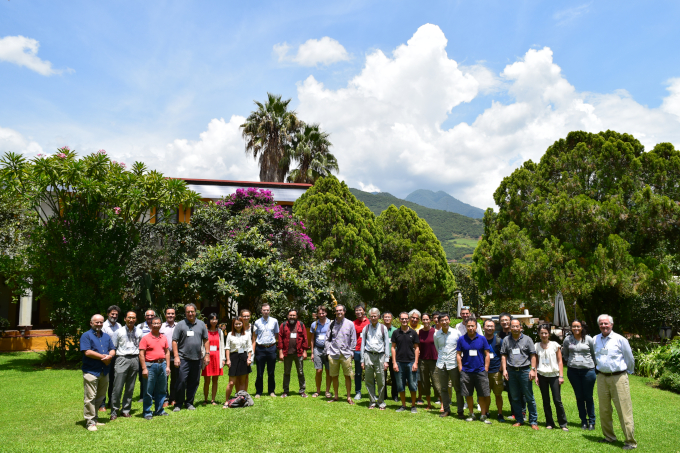Theoretical and Applied Stochastic Analysis (18w5129)
Organizers
Samy Tindel (Purdue University)
Fabrice Baudoin (University of Connecticut)
Cheng Ouyang (University of Illinois at Chicago)
Description
The Casa Matemática Oaxaca (CMO) will host the "Theoretical and Applied Stochastic Analysis" workshop from September 9th to September 14th, 2018.
Probability theory is the mathematical theory concerned with the analysis of random phenomena. Many of such phenomena may be modeled by continuous time stochastic processes, which is the main concern of this conference. The first stochastic process that has been extensively studied is the celebrated Brownian motion, named in honor of the botanist Robert Brown, who observed and described in 1828 the random movement of particles suspended in a liquid or gas. Since then, stochastic processes have appeared in many different areas of sciences and economy, and their theoretical mathematical study has far reaching consequences in understanding and making predictions about the phenomena they model.
Stochastic analysis can be broadly be described as the analysis of stochastic processes. It involves a combination of techniques taken from a wide range of mathematical areas. It is also a widely applied branch of mathematics, being used to model and analyze phenomenons in finance, biophysics or pattern recognition. The workshop will bring together some of the top worldwide experts in this area and promising young researchers. Through expository talks and research presentations, the workshop will give a vibrant overview of the most recent developments and applications of stochastic analysis.
The Casa Matemática Oaxaca (CMO) in Mexico, and the Banff International Research Station for Mathematical Innovation and Discovery (BIRS) in Banff, are collaborative Canada-US-Mexico ventures that provide an environment for creative interaction as well as the exchange of ideas, knowledge, and methods within the Mathematical Sciences, with related disciplines and with industry. The research station in Banff is supported by Canada's Natural Science and Engineering Research Council (NSERC), the U.S. National Science Foundation (NSF), Alberta's Advanced Education and Technology, and Mexico's Consejo Nacional de Ciencia y Tecnología (CONACYT). The research station in Oaxaca is funded by CONACYT.






